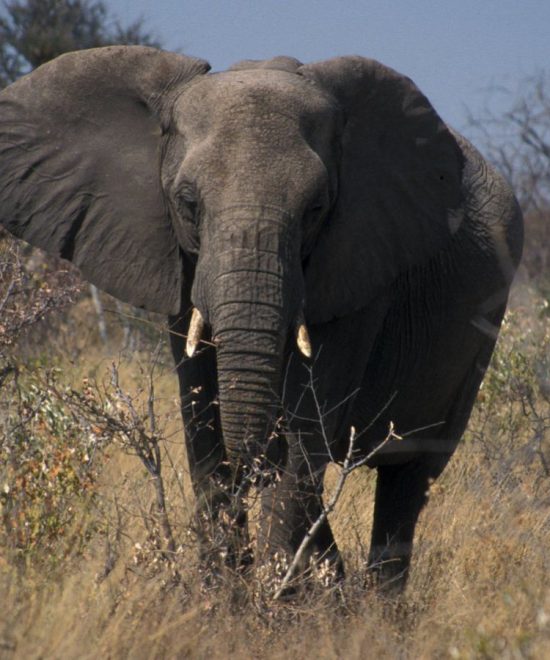Eastern Ethiopia
- Home
- Eastern Ethiopia
Eastern Ethiopia
Harar
Harar, also known as Harar Jugol, is a historic town located in the eastern part of Ethiopia. It’s known for its significant trade routes from the late 16th to 19th centuries and is considered the fourth holiest city of Islam, with 3 mosques from the 10th century and a total of 82 mosques.
The city is surrounded by a wall that spans approximately 3.5 kilometers and stands about 4-5 meters high. This wall, built between the 13th and 16th centuries, served as a protective barrier for the city. The city was divided into five neighborhoods by five historic gates that corresponded to the main roads leading to the town.
Harar Jugol was the capital of the Harari Kingdom from 1520 to 1568. It became an independent emirate in the 17th century and was integrated into Ethiopia in 1887. The city’s unique African and Islamic cultural heritage is reflected in its well-preserved historic townhouses.
The city’s urban layout follows the 16th-century design for an Islamic town with its central core occupied by commercial and religious buildings and a maze of narrow alleyways with imposing facades. The traditional Harari house has a unique architectural form, different from the domestic layout usually known in Muslim countries.
Today, Harar Jugol continues to be an important cultural and historical site. It’s a UNESCO World Heritage site, attracting visitors from around the world who come to experience its rich history and unique cultural heritage.
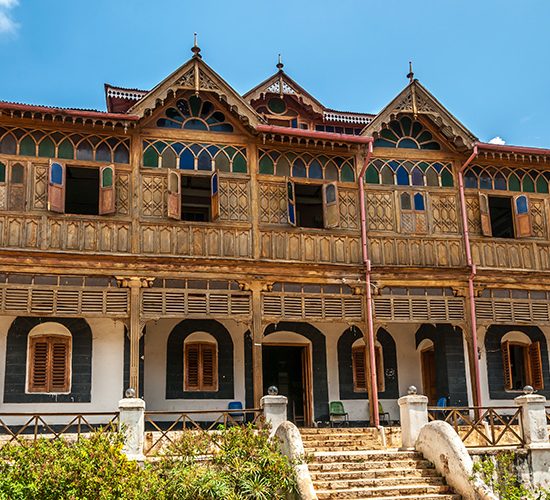
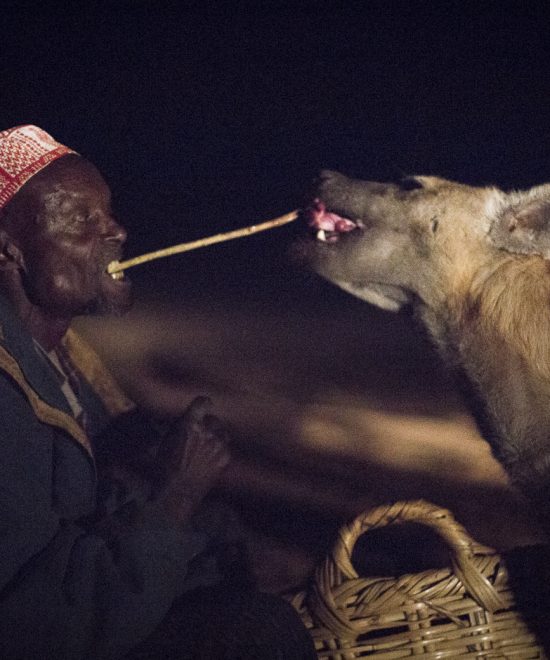
Hyena Feeding Site
In the ancient city of Harar, located in the east of Ethiopia, there is a unique and fascinating tradition that has been carried out for centuries: feeding hyenas. This practice takes place just outside the city walls and has become a major attraction for visitors.
The hyena men of Harar feed hyenas from a stick held between their teeth or with their bare hands. This practice has been going on for hundreds of years and now attracts tourists to come and see this unique interaction. In Harar, hyenas have been fed outside of the city walls for centuries and the practice is still going on today.
There are several theories about why this tradition started. One theory suggests that it began during the 19th Century famine to stop the hyenas from attacking livestock or humans by feeding them scraps of meat to placify them. Another theory suggests that it was started 500 years ago to help sanitize the city by feeding the hyenas refuse. There’s also a folk tale that says Muslim saints gathered together with the hyena leaders and formed a treaty to feed the hyenas porridge, in exchange for the protection of the inhabitants.
Regardless of how this tradition started, it continues today and offers an incredible experience for those who witness it. The hyenas in Harar are surprisingly docile during these feedings, moving with an uncanny grace that belies their reputation as fearsome predators.
Awash National Park
Awash National Park is located at the border of the Oromia state and Afar state. The park spans across the southern tip of the Afar Region and the northeastern corner of the East Shewa Zone of Oromia. It’s situated 225 kilometers east of Addis Ababa and covers an area of 827 square kilometers, most of it lies at an altitude of 900 meters.
The park is known for its rich biodiversity and stunning landscapes. It’s home to more than 81 species of mammals and 43 species of reptiles. Some of the species you can find here include Beisa oryxes, Aardvarks, Aardwolves, caracals, servals, hippopotamuses, Crested porcupines, Spotted hyenas, Striped hyenas, lions, leopards, cheetahs, Soemmerring’s gazelles, Defassa waterbucks, Spotted-necked otters, Rock hyraxes, klipspringers, Salt’s dik-diks, lesser kudus, greater kudus, and warthogs.
The park’s vegetation is classified into four ecosystems: arid Acacia woodlands, thorned bushlands, grazing savannas, and diverse riverine wetlands. Doum palm trees and Desert date trees are found scattered across the Filwoha and Doha sites of Awash National Park which provides a suitable niche for all mammalian, avian, and reptilian species.
The park also features the Awash River gorge with amazing waterfalls such as the Awash Falls. In the upper Kudu Valley at Filwoha are hot springs amid groves of palm trees. The park is also home to Mount Fentale, a dormant stratovolcano which is located in the western area of Awash National Park at an altitude of 2,007 meters above sea level.
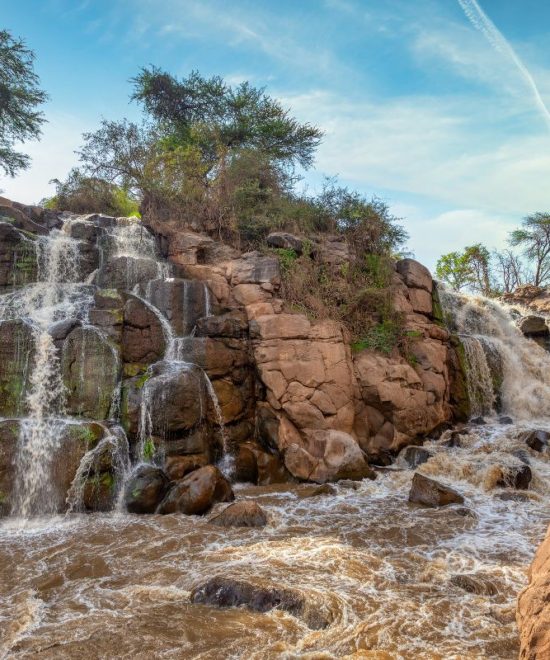
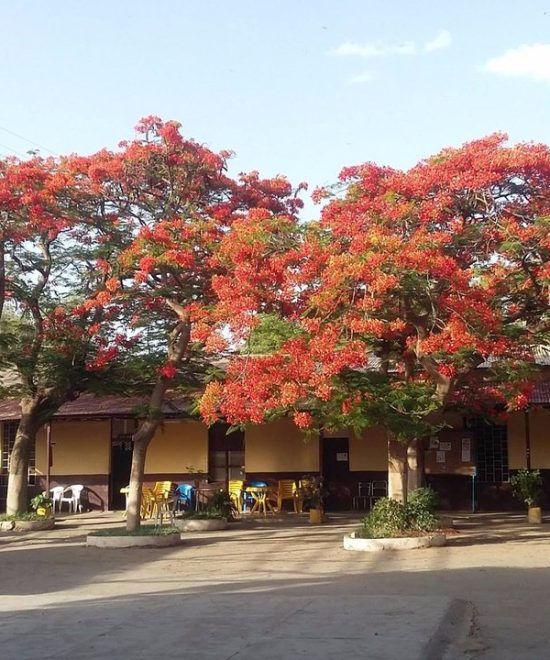
Dire Dawa
The city is an industrial center, home to several markets and the Dire Dawa Airport. The projected population for 2015 was 440,000 for the entire chartered city and 277,000 for the city proper, making it the seventh-largest city in Ethiopia.
The region was already inhabited in Mesolithic times, as revealed by rock paintings and Middle Stone Age artifacts in the cave of Porc-Épic and Laga-Oda only a few kilometers from Dire Dawa. The area surrounding Dire Dawa is believed to have been a settlement of the extinct Harla people.
The present-day town of Dire Dawa owes its foundation to a technical problem: when it became impossible to lay the Addis Ababa-Djibouti Railway via Harar because of the steep access to the town, Emperor Menelik II accepted that the first part of the line might finish at a village at the foot of the mountains, which should be named Addis Harar (“New Harrar”).
Babile
Babile is a district located in the East Hararghe Zone of the Oromia Region in Ethiopia. It’s named after one of the 12 major clans of the Oromo people, the Babille Oromo. The district is mostly inhabited by the Oromo people.
The town of Babile, which is the administrative center of the district, is situated at an elevation of 1648 meters above sea level. It’s known for its hot springs, mineral water, and the Babile Elephant Sanctuary. The sanctuary, located 560 km east of Addis Ababa and 40 km south of Harar, was created to protect Ethiopia’s elephants.
Babile is also known for its unique rock formations in the Dakhata Valley (also called the “Valley of Marvels”), which attract tourists for their beauty and birdlife. The district has a rich biodiversity with 237 plant species covering semi-arid areas of dense Acacia woodlands, thick scrublands, closed savannahs, evergreen shrubs, and widespread cactus areas.
In summary, Babile is a place where nature and culture intertwine to create a unique experience for those who venture there.
